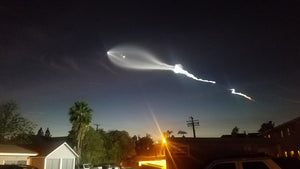July- Lagoon Nebula, Swan Nebula, Ptolemy's Cluster
M8- The Lagoon Nebula
Positioned just above the spout of the teapot asterism in the constellation Sagittarius, the Lagoon Nebula invites us to explore its depths. With binoculars, you can observe this stellar nursery within the same field of view as Alnasl, or Gamma Sagittarii, the star marking the teapot’s tip. Through a small telescope at low magnification, the nebula reveals even more of its splendor: a faint greenish hue and a dark, vertical band that bisects the nebula from northwest to southeast, dividing it into two distinct regions.
The western hemisphere of the Lagoon Nebula shines the brightest, a luminous cloud of gas and dust. Embedded in the eastern part, the stars of NGC 6530 sparkle, newly formed within this stellar nursery. This intricate interplay of light and dark, of new stars emerging from their gaseous cocoons, is a reminder of the dynamic processes that shape our cosmos.
As you gaze upon the Lagoon Nebula, consider the immense forces at play, the gravity and radiation sculpting these vast interstellar clouds. It is a glimpse into the processes that forged our own Sun and the planetary system that cradles our fragile world. Each star within this nebula, each wisp of gas, is part of a cosmic story that spans billions of years and countless light-years.
M17- The Swan Nebula
In the constellation Sagittarius, another celestial wonder awaits those who seek it: Messier 17, the Swan Nebula. Though it may not be as easily found as the Lagoon Nebula, its beauty and intrigue make it well worth the effort.
With a small telescope at low power, the Swan Nebula reveals itself in a distinct and captivating form. The shape of a swan is unmistakable, with the body of the bird glowing more brightly than its gracefully curved neck and head. This luminous cloud of gas and dust, shaped by the forces of stellar winds and radiation, offers a glimpse into the dynamic processes of star formation.
As you gaze upon the Swan Nebula, consider the immense scale of the events unfolding within. Here, new stars are born from the dense molecular clouds, their intense radiation carving out the shapes we see from Earth. The brighter body of the swan represents regions of intense star formation, where young, hot stars energize the surrounding gas, causing it to glow with an ethereal light.
The neck and head of the swan, fainter yet still discernible, add to the nebula's graceful appearance, a cosmic reminder of the delicate balance between creation and destruction in the universe. Each wisp of gas, each newborn star within Messier 17, is part of a larger story that spans eons and light-years, a testament to the ongoing cycles of birth and death that shape our galaxy.
M7- Ptolemy's Cluster
In the constellation of Scorpius, near the Scorpion's stinger, lies a celestial treasure: Ptolemy's Cluster, also known as Messier 7. This open star cluster, along with its neighbor M6, offers a splendid view for those who turn their gaze skyward. Of the two, M7 shines brighter and can be seen with the naked eye under the pristine conditions of dark skies, a glittering jewel in the night.
When viewed through binoculars, M7 reveals its true splendor. The cluster bursts into a collection of stars, a dazzling array set against the backdrop of the Milky Way. For those with a small telescope, M7 presents an even more enchanting sight. A multitude of golden stars fills the field of view, each one a distant sun, contributing to the rich tapestry of our galaxy.
Ptolemy's Cluster, named after the ancient astronomer who first recorded it, is a reminder of the long tradition of stargazing that connects us to our ancestors. This cluster, visible to the unaided eye for millennia, continues to inspire wonder and curiosity in those who observe it.







